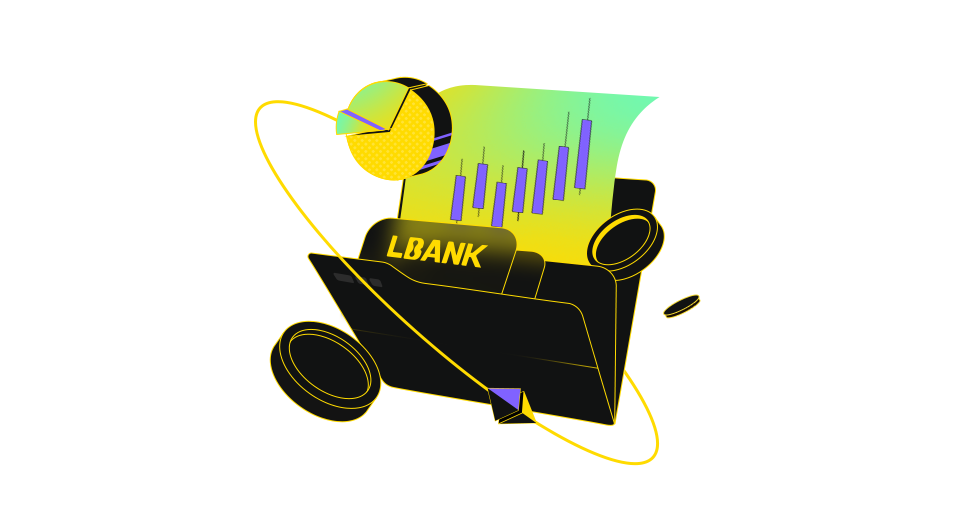What immediate actions did the MANTRA team, particularly JP Mullin, take after the MANTRA($OM) token crash?
2025-04-17
Beginners Must Know
"Key steps taken by JP Mullin and the MANTRA team post-$OM token crash."
The MANTRA($OM) token crash was a significant event that demanded swift and decisive action from the MANTRA team, particularly from key figures like JP Mullin. The crash, which led to a sharp decline in the token's value, required a multi-faceted response to address the immediate fallout, reassure stakeholders, and lay the groundwork for recovery. Below is a detailed breakdown of the immediate actions taken by the MANTRA team, with a focus on JP Mullin's role in managing the crisis.
### 1. Communication and Transparency
One of the first steps taken by the MANTRA team was to issue a public statement addressing the crash. JP Mullin played a central role in drafting and disseminating this communication, emphasizing the team's commitment to transparency. The statement acknowledged the severity of the situation while reassuring the community that the team was actively working to resolve the issue. Regular updates followed, keeping stakeholders informed about ongoing investigations and recovery efforts. This open line of communication was crucial in maintaining trust during a period of uncertainty.
### 2. Technical Analysis and Investigation
To identify the root cause of the crash, the MANTRA team conducted a thorough technical analysis. JP Mullin likely coordinated with developers, blockchain analysts, and security experts to review the smart contract code, transaction history, and other critical data points. The goal was to determine whether the crash resulted from external market forces, internal vulnerabilities, or a combination of factors. This investigation was essential for formulating an effective recovery plan and preventing similar incidents in the future.
### 3. Community Engagement
Recognizing the importance of community trust, JP Mullin and the MANTRA team actively engaged with token holders and stakeholders across multiple platforms. This included hosting AMAs (Ask Me Anything sessions), participating in forum discussions, and responding to concerns on social media. By addressing questions and providing clear explanations, Mullin helped mitigate panic and foster a sense of solidarity within the community. His direct involvement in these interactions underscored the team's dedication to its user base.
### 4. Development of a Recovery Plan
With the initial investigation complete, the MANTRA team, led by JP Mullin, developed a comprehensive recovery plan. This plan likely included short-term measures such as liquidity injections or token burns to stabilize the token's value, as well as longer-term strategies to rebuild confidence. Mullin's leadership ensured that these steps were aligned with the DAO's governance principles and community expectations. The recovery plan was communicated transparently, allowing stakeholders to understand the path forward.
### 5. Regulatory Compliance Review
Given the heightened scrutiny of cryptocurrency projects by regulators worldwide, the MANTRA team also prioritized a review of its compliance posture. JP Mullin likely collaborated with legal advisors to ensure that all actions taken in response to the crash adhered to relevant regulations. This proactive approach helped the team avoid additional complications that could arise from non-compliance, such as fines or legal challenges.
### 6. Long-Term Strategy Formulation
Beyond immediate damage control, JP Mullin and the MANTRA team began working on a long-term strategy to enhance the project's resilience. This included potential upgrades to security protocols, improvements in governance mechanisms, and diversification of the ecosystem's offerings. By addressing systemic weaknesses, the team aimed to reduce the likelihood of future crashes and strengthen the overall sustainability of the MANTRA DAO.
### Ongoing Efforts and Challenges
While the immediate actions helped stabilize the situation, the recovery process remains ongoing. JP Mullin continues to lead efforts to restore confidence, with regular updates on progress and challenges. Community sentiment has been mixed, with some members expressing frustration while others appreciate the team's transparency. Regulatory pressures also persist, requiring the team to remain vigilant in its compliance efforts.
### Conclusion
The MANTRA($OM) token crash tested the resilience of the MANTRA DAO and its leadership. JP Mullin's immediate actions—ranging from transparent communication and technical investigations to community engagement and recovery planning—were critical in navigating the crisis. His ability to balance short-term fixes with long-term strategic improvements has positioned the project for a more stable future. As the situation evolves, the lessons learned from this event will likely shape the MANTRA ecosystem's approach to risk management and community relations moving forward.
### 1. Communication and Transparency
One of the first steps taken by the MANTRA team was to issue a public statement addressing the crash. JP Mullin played a central role in drafting and disseminating this communication, emphasizing the team's commitment to transparency. The statement acknowledged the severity of the situation while reassuring the community that the team was actively working to resolve the issue. Regular updates followed, keeping stakeholders informed about ongoing investigations and recovery efforts. This open line of communication was crucial in maintaining trust during a period of uncertainty.
### 2. Technical Analysis and Investigation
To identify the root cause of the crash, the MANTRA team conducted a thorough technical analysis. JP Mullin likely coordinated with developers, blockchain analysts, and security experts to review the smart contract code, transaction history, and other critical data points. The goal was to determine whether the crash resulted from external market forces, internal vulnerabilities, or a combination of factors. This investigation was essential for formulating an effective recovery plan and preventing similar incidents in the future.
### 3. Community Engagement
Recognizing the importance of community trust, JP Mullin and the MANTRA team actively engaged with token holders and stakeholders across multiple platforms. This included hosting AMAs (Ask Me Anything sessions), participating in forum discussions, and responding to concerns on social media. By addressing questions and providing clear explanations, Mullin helped mitigate panic and foster a sense of solidarity within the community. His direct involvement in these interactions underscored the team's dedication to its user base.
### 4. Development of a Recovery Plan
With the initial investigation complete, the MANTRA team, led by JP Mullin, developed a comprehensive recovery plan. This plan likely included short-term measures such as liquidity injections or token burns to stabilize the token's value, as well as longer-term strategies to rebuild confidence. Mullin's leadership ensured that these steps were aligned with the DAO's governance principles and community expectations. The recovery plan was communicated transparently, allowing stakeholders to understand the path forward.
### 5. Regulatory Compliance Review
Given the heightened scrutiny of cryptocurrency projects by regulators worldwide, the MANTRA team also prioritized a review of its compliance posture. JP Mullin likely collaborated with legal advisors to ensure that all actions taken in response to the crash adhered to relevant regulations. This proactive approach helped the team avoid additional complications that could arise from non-compliance, such as fines or legal challenges.
### 6. Long-Term Strategy Formulation
Beyond immediate damage control, JP Mullin and the MANTRA team began working on a long-term strategy to enhance the project's resilience. This included potential upgrades to security protocols, improvements in governance mechanisms, and diversification of the ecosystem's offerings. By addressing systemic weaknesses, the team aimed to reduce the likelihood of future crashes and strengthen the overall sustainability of the MANTRA DAO.
### Ongoing Efforts and Challenges
While the immediate actions helped stabilize the situation, the recovery process remains ongoing. JP Mullin continues to lead efforts to restore confidence, with regular updates on progress and challenges. Community sentiment has been mixed, with some members expressing frustration while others appreciate the team's transparency. Regulatory pressures also persist, requiring the team to remain vigilant in its compliance efforts.
### Conclusion
The MANTRA($OM) token crash tested the resilience of the MANTRA DAO and its leadership. JP Mullin's immediate actions—ranging from transparent communication and technical investigations to community engagement and recovery planning—were critical in navigating the crisis. His ability to balance short-term fixes with long-term strategic improvements has positioned the project for a more stable future. As the situation evolves, the lessons learned from this event will likely shape the MANTRA ecosystem's approach to risk management and community relations moving forward.
Related Articles
How are RWAs different from traditional financial assets?
2025-05-22 10:16:47
How does DeFi differ from traditional finance systems?
2025-05-22 10:16:47
Can you elaborate on how equitable distribution is achieved in the new tokenomic model?
2025-05-22 10:16:46
What implications does this collaboration have for blockchain gaming acceptance?
2025-05-22 10:16:46
How does U.S. Steel Corporation's performance compare to its competitors in light of the new price target?
2025-05-22 10:16:46
Are there fees associated with different deposit methods on Binance?
2025-05-22 10:16:45
How complex are DeFi protocols involved in yield farming as mentioned in the research news about CoinGecko's Earn Platform?
2025-05-22 10:16:45
How important does Buterin consider institutional adoption of cryptocurrencies?
2025-05-22 10:16:45
What types of insights or findings should be highlighted during the analysis of news articles?
2025-05-22 10:16:44
What role do stablecoins play in facilitating transactions within the cryptocurrency ecosystem?
2025-05-22 10:16:44
Latest Articles
How does DeFi differ from traditional finance systems?
2025-05-22 10:16:47
How are RWAs different from traditional financial assets?
2025-05-22 10:16:47
Can you elaborate on how equitable distribution is achieved in the new tokenomic model?
2025-05-22 10:16:46
What implications does this collaboration have for blockchain gaming acceptance?
2025-05-22 10:16:46
How does U.S. Steel Corporation's performance compare to its competitors in light of the new price target?
2025-05-22 10:16:46
How complex are DeFi protocols involved in yield farming as mentioned in the research news about CoinGecko's Earn Platform?
2025-05-22 10:16:45
Are there fees associated with different deposit methods on Binance?
2025-05-22 10:16:45
How important does Buterin consider institutional adoption of cryptocurrencies?
2025-05-22 10:16:45
What is Mashinsky's perspective on the role of self-regulation within the crypto industry?
2025-05-22 10:16:44
What role do stablecoins play in facilitating transactions within the cryptocurrency ecosystem?
2025-05-22 10:16:44
Hot Topics
Technical Analysis

1606 Articles
DeFi

90 Articles
MEME

62 Articles
Cryptocurrency Rankings
Top
New Spot
No data
Expand
Fear and Greed Index
Reminder: Data is for Reference Only
73
Greed
